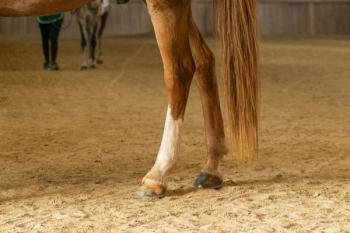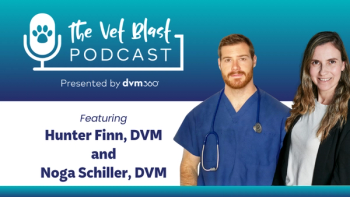
Veterinarians find therapy rich in possibilities
Platelet-rich plasma therapy is being increasingly used in veterinary medicine for canine orthopedic and sports medicine applications, but numerous questions remain regarding this promising treatment.
This is the second article of a two-part dvm360 series focusing on regenerative medicine therapies. For part one, on stem cell therapy in dogs, visit
Platelet-rich plasma therapies have been studied extensively in human clinical medicine and in experimental animal models for facilitating the healing of bone, tendon and ligament as well as for intra-articular treatment of osteoarthritis. Although evidence supporting the efficacy of such treatments isn't always clear, the potential for augmented tissue healing using a simple, relatively inexpensive and autologous therapy is driving continued use and investigation in human medicine. Likewise, the use of platelet-rich plasma (PRP) is on the rise in clinical veterinary medicine, initially with equine patients and more recently with dogs.
Dr. Sam Franklin
Although there are no universal criteria defining what makes plasma "platelet-rich," the most lenient definition is a plasma preparation that contains a higher concentration of platelets than that found in the whole blood from which the PRP is prepared. The proposed mechanism of action is the provision of growth factors, stored within the platelet alpha granules, which may mitigate inflammation and initiate anabolic processes and tissue healing. Many different growth factors are contained in these alpha granules, but those most commonly cited to facilitate tissue healing include vascular endothelial growth factor (VEGF), platelet-derived growth factors (PDGF) and transforming growth factors β (TGFβ), among others.
PRP preparation
The primary goals of PRP preparation are to remove erythrocytes, which are inflammatory when extravascular, and increase platelet concentration in plasma. This can be accomplished with basic laboratory supplies and specific centrifugation protocols.1 However, many practitioners (in human and veterinary medicine) use commercially available PRP concentrating systems because they are convenient. In addition, these systems might facilitate maintenance of sterility and could potentially produce a more consistent PRP product, although this has not been demonstrated.
Platelet-rich plasma therapy is gaining ground in veterinary medicine for the treatment of orthopedic injuries and diseases. Will this technology soon be a popular option for your patients? (THINKSTOCK/XRENDER)
The majority of the commercially available proprietary systems are made for preparing human PRP and are now being sold in the veterinary market, many without published data characterizing the PRP obtained when used with canine blood. This is pertinent because the characteristics of PRP obtained using human blood and canine blood with the same system can differ. Although a comprehensive review of all the characteristics of PRP that a clinician should consider is beyond the scope of this article, the following are several criteria that clinicians should investigate if interested in using PRP:
> What is the platelet concentration, leukocyte concentration, and ratio of platelets to leukocytes in the final PRP preparation using blood from the species of interest? Although all PRP systems are supposed to concentrate platelets, some systems are leukoreductive while others concentrate leukocytes. While the concentration of anabolic growth factors tends to correlate with the platelet concentration, the concentrations of inflammatory cytokines also correlate with leukocyte concentration in human PRP.2 The ideal PRP for a given condition may be a function of platelet concentration, leukocyte concentration or their ratio.3
> How much blood is being taken from the patient for PRP preparation and how much PRP is produced?
> Is addition of calcium chloride, thrombin or some other step used to activate the platelets with the given PRP system of interest? Such treatments can prompt a rapid and abundant release of growth factors from the platelets. This may be beneficial or it may preclude more extended release if activation were allowed to occur naturally in vivo.3
For interested clinicians, reading the excellent but concise review by Arnoczky and Shebani-Rad is strongly encouraged.3 However, to summarize briefly, there is wide variability in different PRP preparations. Therefore the results with use of one PRP may not be representative of the results obtained using a different PRP. Likewise, the ideal PRP may differ depending on the condition being treated, such as intra-articular therapy for osteoarthritis versus intra-lesion injection for treatment of tendon injuries. Therefore, the onus is on clinicians to know the characteristics of the PRP system they are using and the associated evidence for efficacy in treating a specific medical condition in the species they are treating.
Platelet-rich plasma can be produced from whole blood using a system such as this one from Arthrex Vet Systems in Naples, Fla. (PHOTO COURTESY OF DR. FRANKLIN)
Efficacy data
In 2013, three studies were published providing initial data regarding efficacy of different PRP preparations in treating naturally occurring disease in dogs. One author performed a blinded, prospective, randomized study comparing the efficacy of intra-articular use of autologous conditioned plasma (ACP Arthrex Vet Systems, Naples, Fla.) to the use of hyaluronan and corticosteroids for treatment of elbow osteoarthritis (OA) in 10 dogs. Significant improvements were identified in both treatment groups based on owner and veterinarian assessments using validated, subjective outcomes measures. Some improvements were greater in the ACP treatment group, and no adverse reactions were recorded in either treatment group, consistent with product safety.4 Although these results are positive, the study did not include force plate data.
Fahie et al. performed a prospective, randomized, controlled study comparing the efficacy of PRP obtained using the Canine Platelet Enhancement Therapy apheresis system (C-PET, Pall Corp., Port Washington, N.Y.) to saline injection for treatment of osteoarthritis in 20 dogs.5 The study included objective force plate data for half the dogs in addition to using validated subjective outcome measures for all dogs. The results demonstrated significant improvements in objective and subjective outcomes over a 12-week follow-up period with intra-articular use of the PRP. No improvement was noted for dogs treated with intra-articular saline injection.
Yet another group published results from a prospective, randomized study assessing the effects of three PRP injections post-intra-articular fascia lata autograft for stabilization of cranial cruciate ligament deficient stifles in 10 dogs.6 Peak vertical force and vertical impulse measured using a force plate improved from preoperative state to day 90 after surgery for the six dogs treated with PRP. No such improvement was noted for the four dogs in the control group. Likewise, force plate data indicated significantly greater weight bearing with the affected limb for dogs treated by PRP compared to the affected limb of control dogs at day 90 after surgery.
Conclusion
PRP has many characteristics that make it appealing for clinical application. It is relatively inexpensive, autologous, safe and may mitigate inflammation and facilitate tissue healing. These attributes, coupled with promising results from the initial clinical studies performed,4-6 warrant further characterization of the PRP products available and investigation of their efficacy for treatment of common orthopedic diseases and injuries. Such studies would ideally compare PRP to standard of care treatments as well as other regenerative medicine treatments, such as stem cell therapy, which is more involved and more expensive. These data should be increasingly available in the next few years, offering practitioners guidance on when and how to use PRP to benefit their patients.
Dr. Sam Franklin is a board-certified surgeon and sports medicine and rehabilitation specialist at the University of Georgia.
References
1. Perazzi A, Busetto R, Martinello T, et al. Description of a double centrifugation tube method for concentrating canine platelets. BMC Vet Res 2013;9:146.
2. Sundman EA, Cole BJ, Fortier LA. Growth factor and catabolic cytokine concentrations are influenced by the cellular composition of platelet-rich plasma. Am J Sports Med 2011;39:2135-2140.
3. Arnoczky SP, Shebani-Rad S. The basic science of platelet-rich plasma (PRP): what clinicians need to know. Sports medicine and arthroscopy review 2013;21:180-185.
4. Franklin SP, Cook JL. Autologous conditioned plasma versus hyaluronan plus corticosteroid for treatment of chronic elbow osteoarthritis in dogs. Can Vet J 2013;54:881-884.
5. Fahie MA, Ortolano GA, Guercio V, et al. A randomized controlled trial of the efficacy of autologous platelet therapy for the treatment of osteoarthritis in dogs. J Am Vet Med Assoc 2013;243:1291-1297.
6. Silva RF, Carmona JU, Rezende CM. Intra-articular injections of autologous platelet concentrates in dogs with surgical reparation of cranial cruciate ligament rupture: a pilot study. Vet Comp Orthop Traumatol 2013;26:285-290
Newsletter
From exam room tips to practice management insights, get trusted veterinary news delivered straight to your inbox—subscribe to dvm360.






